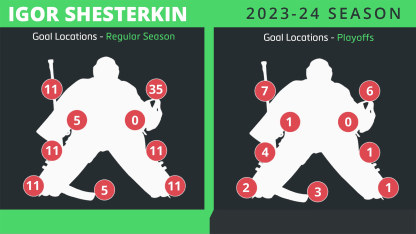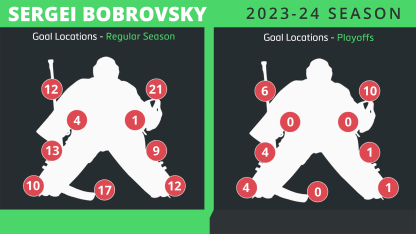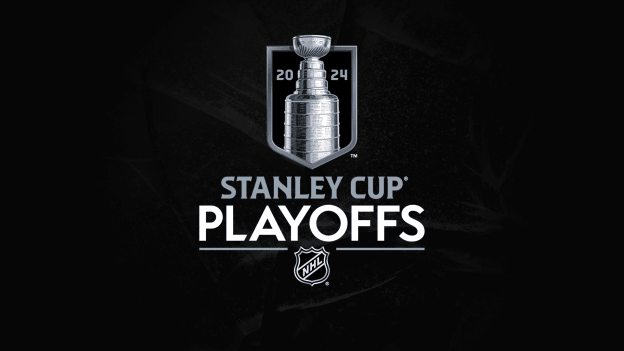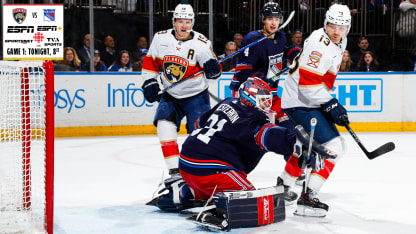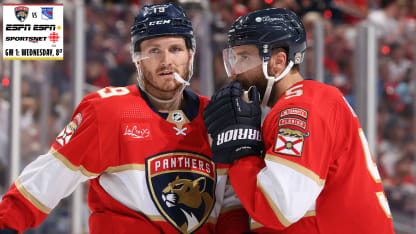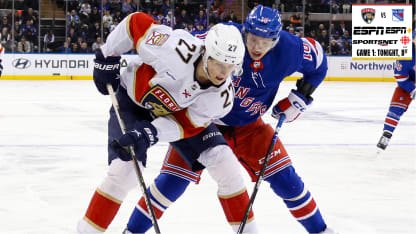Don't waste shots: Shesterkin only gave up two goals on clean looks all season, and has yet to allow one in the playoffs, and spits out a bad rebound on those low-quality shots even less, so it's important to increase the degree of difficulty by getting traffic and tips, creating scrambles in front, and making him move side to side. In fact, most of the goals he's allowed in the playoffs required a combination of those factors.
Deflections: Reinforcing that need to make things difficult was an increase in deflection goals by the Hurricanes, who tipped five past Shesterkin after deflections were the primary factor on just six of 100 tracked goals in the regular season, and none in the first round.
Rebounds in tight and elevate: Similarly, rebounds account for six goals in the playoffs (24 percent), which is double his tracked regular season rate (12) and above the NHL average (11.7 percent). Unlike some goalies now using pads designed to produce longer, more active rebounds, Shesterkin uses a more traditional build that can leave them sitting closer to the net, with all the rebound goals so far in the playoffs coming from below the hash marks. He can get caught out near the edge of his crease on broken play battles for loose pucks, which accounted for 21 percent of his goals in the regular season and 3-of-7 in the first round but just 1-of-18 in the second round. Funneling loose pucks to a teammate off to the side is effective, but Shesterkin is one of the best moving from his knees and usually gets a glove over that lead pad when he pushes side to side, so shooting along the ice even on lateral scramble plays gives him a chance to make a momentum-changing save.
Low-high, below bottom of circles: Passes from below the goal line below the bottom of the face-off circles accounted 23 percent of the tracked goals, and 2-of-7 in the first round and 5-of-18 in the second, all above the average of 17.1 percent. Shesterkin is one of the NHL's best skaters, so plays that force him back to his posts before a low-high pass can delay his ability to get out and set as cleanly as he would on other plays. It helps explains why lateral plays below the hash marks led to more goals (14 in the regular season and three in the playoffs) then cross-ice plays higher in the zone (four and one). Carrying the puck deep on rush chances also works, as he tends to overlap his post with his outside skate as it gets below the circle, creating a big rotation and push if the puck is moved laterally.
High glove, not blocker: All six high-glove goals in the playoffs came in the second round against Carolina after Shesterkin was perfect with the glove in the opening round against Washington. That's consistent with the 35 percent that went in over his glove among his final 100 goals of the regular season, which is almost 12 percent above the tracked average since this project started in 2017. While some of that is the inherent nature of players aiming for the top corners because every goalie drops into a butterfly, there was a notable discrepancy between the glove and the blocker side in the regular season. Shesterkin starts with his glove up near his shoulder, which is designed to take the space away visually for shooters, but tends to drop it onto his hip, especially if he's moving laterally into his stance (14 of the 35 high-glove goals came off cross-ice play and passes).

